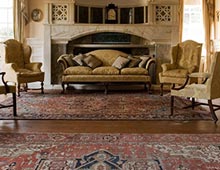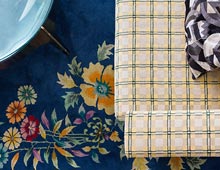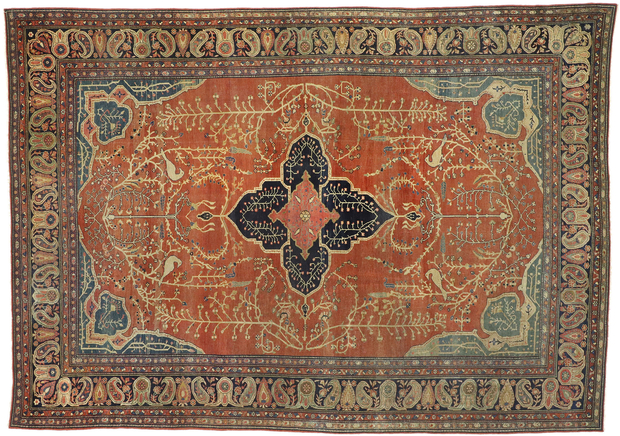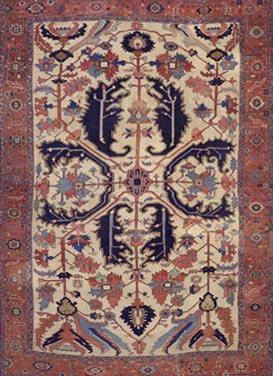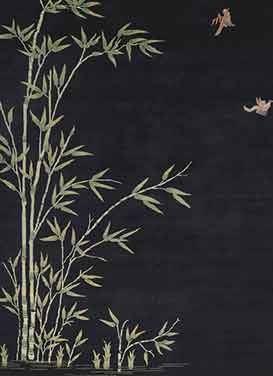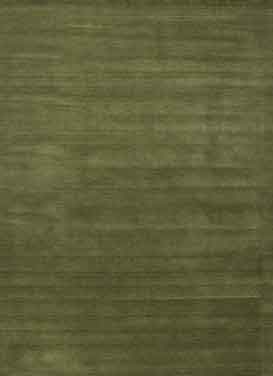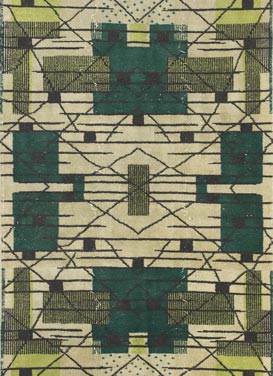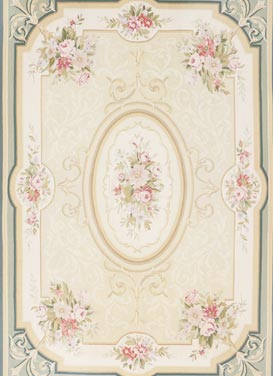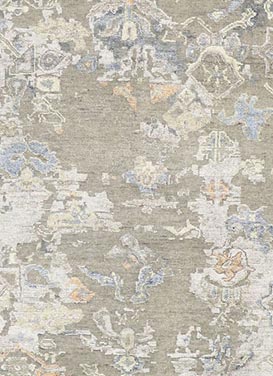- Inquiry
Description
76783 Late 19th Century Antique Persian Farahan Rug, 08'09 x 12'03.
Unfolding like a page from a Persian manuscript, this hand-knotted wool antique Farahan rug from the Late 19th Century exudes a grandeur born of restraint, elegance, and botanical fantasy. Woven circa 1880's in the heart of western Iran, this piece is a sublime example of the Farahan region’s high craftsmanship under the Qajar dynasty, when such rugs were often created for discerning connoisseurs both at home and abroad. The composition is anchored by a striking quatrefoil medallion in midnight navy blue, blossoming with feathery motifs and framed by an open terra cotta field alive with ascending vinery, curling tendrils, tree of life motifs, and stylized blossoms that seem to pulse with life. These floral forms, drawn with poetic fluidity, pay homage to the classical Persian garden ideal—orderly yet untamed, cultivated yet wild.
The terra cotta field acts as a radiant canvas, glowing with vegetal warmth and allowing the sinuous vines and boteh motifs to emerge like wind-swept reeds or flowering trees. The vines arch upward with symmetrical grace, flanking the central medallion in mirrored arcs that recall the visual rhythm of a mirrored garden seen through a palace window. Birds perch delicately amid the scrolling vinery, evoking themes of serenity and spiritual guardianship. The corner spandrels, rendered in soft verdigris and deep cerulean, introduce a watery tranquility, their angular cartouches suggesting distant architectural pavilions surrounded by floral thickets.
Enclosing this paradise is an ornate border that unfurls like a silken ribbon. The wide main border features a breathtaking parade of boteh, cypress trees, louts blossoms, and rosettes—each echoing the eternal dance of growth and regeneration. This main frame is flanked by multiple guard bands: a delicate rosette-and-vine inner band and a rhythmic reciprocal boteh outer guard. The architectural symmetry of these bands suggests the idea of sacred enclosure—an Edenic refuge framed by the enduring cycle of nature and spirit. The finesse with which these motifs are rendered testifies to the weaver’s mastery and to the Farahan tradition of combining courtly elegance with regional charm.
Viewed up close, the hand-spun wool exhibits a luminous sheen and a silky hand, further attesting to the rug's high knot count and use of natural dyes. The color palette—terra cotta, navy blue, and earthy hues—has mellowed with time into a harmonious tableau of aged richness. As with many 19th-century Farahan carpets, this woven wonder was not only a decorative object but a symbol of refinement and prestige, destined to adorn the salon of a merchant prince or the study of a European collector entranced by the Orient.
This antique Farahan rug, with its lyrical composition and historical gravitas, bridges the realms of utility and art. It speaks to a moment in time when rugs were imbued with cultural meaning and woven with the patience of generations. A collector’s treasure and a connoisseur’s delight, it offers not only visual poetry but a tactile legacy from Persia’s golden age of carpet weaving.
- Abrash.
- Hand knotted wool.
- Made in Iran.
- Measures: 08'09 x 12'03.
- Date: 1880's. Late 19th Century.
- This has been restored.



